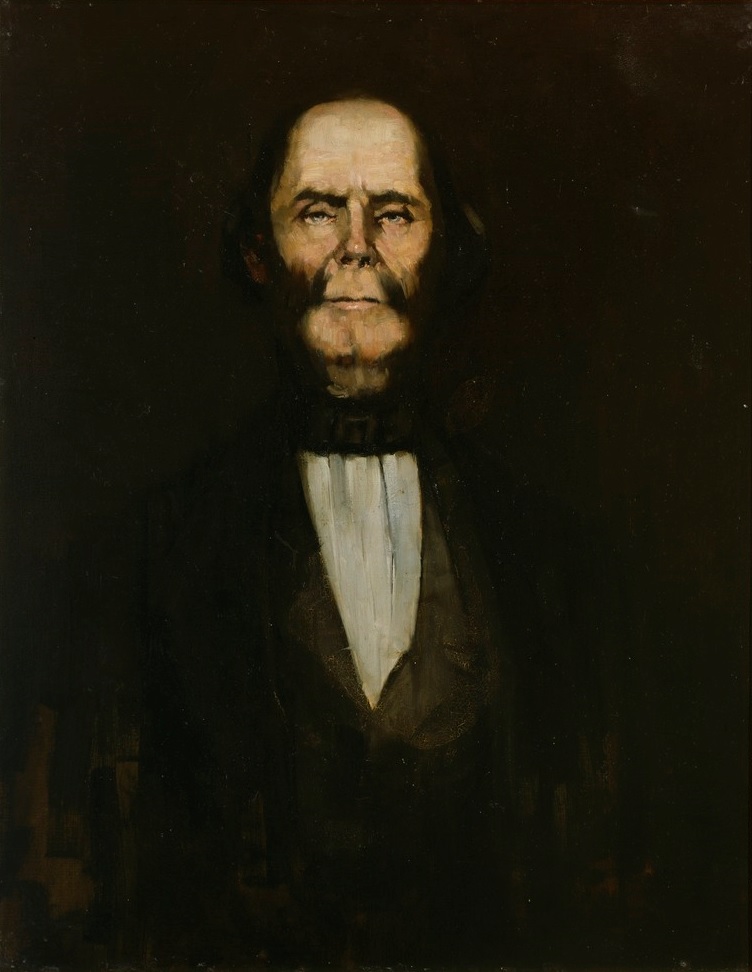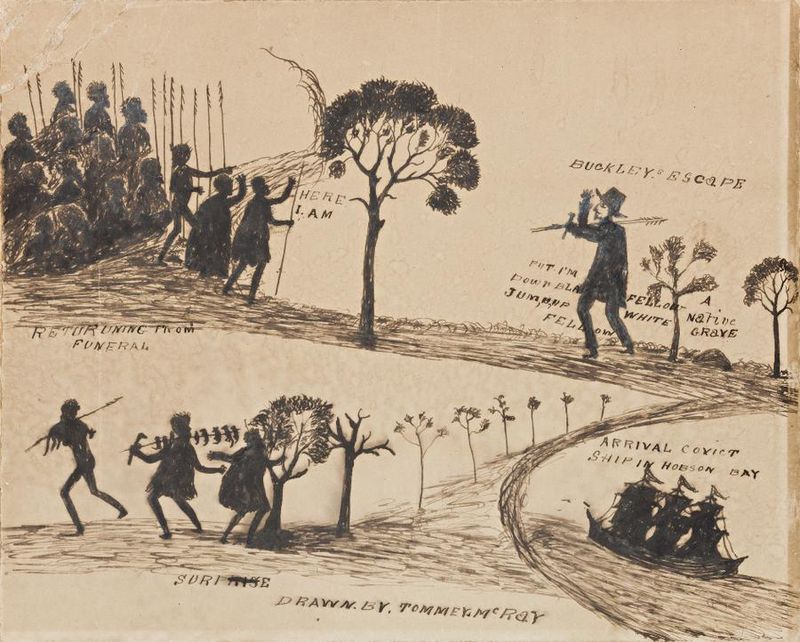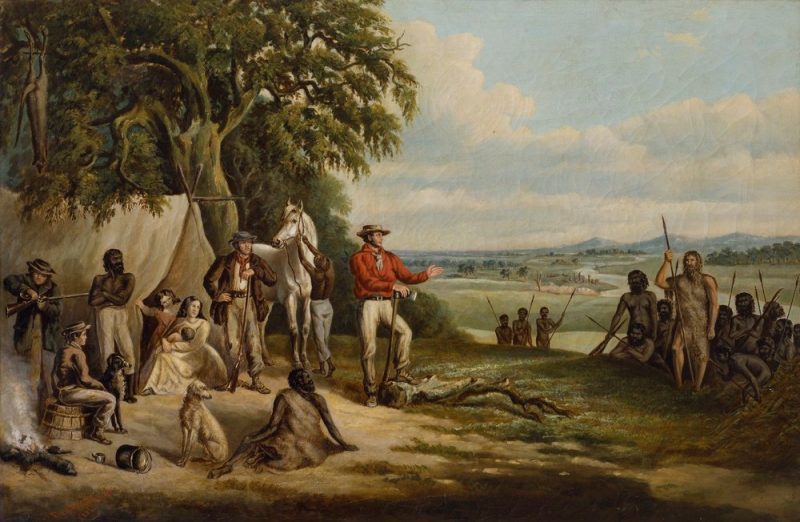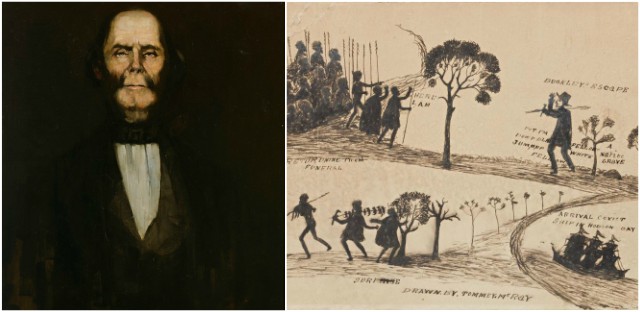William Buckley was born sometime in 1780 in Marton, Cheshire, England. He was one of four children in his family and when he was six years old he was brought up by his grandfather in Macclesfield.
He was apprenticed to a bricklayer, but he ran away from his apprenticeship in order to join the King’s Foot Regiment and later the King’s Own Regiment.
He fought in the Netherlands against Napoleon in 1799 under the command of the Duke of York. However, his career in the military didn’t last longer than his career as an apprentice bricklayer.
In August of 1802, he was accused and convicted of knowingly accepting a bolt of stolen cloth from a woman. In April of 1803, he was convicted and sent aboard the HMS Calcutta to Australia to serve a fourteen-year prison sentence.
On Christmas Eve in 1803, knowing that the officers had been drinking and would be less alert than usual, Buckley and other convicts stole a kettle, a gun, boots, and medical supplies.
At 9pm on 30 December, the group made its escape. During the escape attempt, Charles Shaw was shot and severely injured, but the others escaped into the bush.

William Buckley and his fellow convicts walked around most of Port Phillip Bay. They survived on shellfish and succulent plants when they could find them. Most of them were hungry and scared that they might be attacked by Aboriginal tribes in the Australian wilderness.
All of them except for Buckley decided to go back to the settlement at Sullivan’s Bay where they were held before. Buckle loved freedom so much that he decided to stay in the wilderness.
Buckley tried to avoid the Native Australians but one day he met an Aboriginal family on the beach. It seems that they liked Buckley so much that they decided to take him in and teach him their language. Eventually, he left the family in order to continue to his way to Sydney.
It was about a year after he escaped from the convict settlement when he met two Aboriginal women from the Wathaurung people. He had a spear with him that he took it from a grave just nearby. The grave was that of Murrangurk, a warrior of the Aboriginal tribe Wathaurong. The women of the Wathaurong tribe recognized the spear. This is how Buckley described the situation:
“[The Wathaurong Aboriginals] came up, and viewing me for some time with evident astonishment, at length made signs to me to follow them. I immediately did so, although I despaired of my life as my impression was that they intended to kill me … on reaching a hut or ‘Willum,’ near which was a Waterhole, I made signs that I was thirsty and they gave me some water and, without being asked, offered me some gum beat up and prepared in their manner. They then all sat down and a general howling was set up around me, the women crying and sobbing…”

The Wathaurong tribesmen believed Buckley was Murrangurk’s spirit returned and he was allowed to live in their community. This was because Buckley was carrying his spear which he had found near the warrior’s burial mound.
The women took Buckley back to their camp, where he lived for the next 32 years. He became a respected member of the Wathaurung community, with Aborigines from other areas even recognizing him as one of the Wathaurung tribe. He learned to hunt and gather food and was a local expert when it came to fishing as he says in Reminiscences of James Buckley:
“I became as expert as any of them in spearing the Kangaroo and taking fish – and with regard to the latter was generally more successful [than any of them] when fishing alone.”

He was given a wife, with whom he later had a daughter. For the next 32 years, he lived this way as a respected member of the tribe and he became fluent in an Aboriginal language:
“After a few years residence among the natives I could speak the language quite well – when I had attained this knowledge of their tongue, I was fast losing my own.”
According to William Goodall, Buckley did not encounter any white settlers during his more than thirty years with the Wathaurong Aboriginals and so he was forced to stay with the tribe. He eventually decided to make his presence known to the Europeans and he entered a British camp with a group of Aboriginals.
He was afraid that he might be re-arrested by the British so he told them that he was a shipwrecked soldier. Later he revealed his true identity and received a pardon for his former crimes.
His ability to communicate with the Aborigines earned him the nickname “Wild White Man,” and led to him later becoming an interpreter and negotiator for John Batman and other early settlers.
